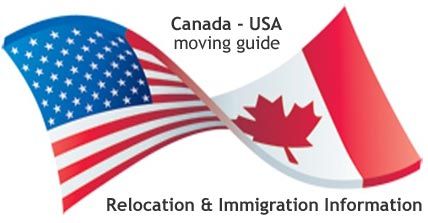If you’re thinking about immigrating to the USA, you’ve made an exciting decision!
America offers so many opportunities and possibilities that it can be difficult to choose which of them you want to pursue first.
There are some differences between immigrating to the USA and moving there permanently, so make sure you know what you’re getting into before you take the leap.
If you’re considering immigrating to the USA, here are some things to consider.
Do You Need an “Immigrant” or “Nonimmigrant” Visas
Not every type of visa lets you live in America permanently. Some, such as K visas and fiancé visas, let you stay for a limited time but don’t lead to citizenship.
That said, if you have an employment-based visa or are a member of an immediate relative family (such as a parent or spouse), then you may be eligible for permanent residence in some cases.
Speak with an immigration attorney about your specific case for more information.
Also, note that not all nonimmigrant visas allow you to work in America; many require that you be able to prove financial self-sufficiency. For example, J-1 exchange visitors cannot legally accept employment in America without first obtaining government permission.
In most cases, you can apply for permission from your U.S. Citizenship and Immigration Services (USCIS) officers before leaving your home country; however, there are other types of visas that do not allow work at all—for example, B2 tourist visas only permit travel within a 90-day period.
If you plan on working while in America, it’s important to understand what kind of visa you need.
You should also check whether or not your country has any reciprocal agreements with America regarding visas. In general, countries like Canada and Australia have working holiday agreements with America that allow citizens to come to America temporarily and take up short-term jobs in their field of study.
Other countries do not reciprocate these agreements, so they must obtain one of several different types of visas instead.
The best way to find out which visa is right for you is to speak with an immigration lawyer.
It might cost a few hundred dollars, but it will save you thousands in fines and possible deportation down the road.
A simple online search for immigration lawyers [your city] should bring up plenty of results.
And remember: There is no official list of immigrant and nonimmigrant visas; these are merely guidelines used by immigration officials when deciding whether or not to issue you a visa.
When speaking with an immigration lawyer, make sure he or she understands exactly what kind of visa you need—otherwise he or she might try to convince you that another visa would be better suited for your situation.
What are the requirements for immigrating?
To be eligible for a green card and potential citizenship in the United States, you must first apply for a visa with one of U.S. Citizenship and Immigration Services (USCIS) four preference categories: family-sponsored, employment-based, special immigrants, or diversity lottery.
You may also qualify for an EB-5 investor visa if you invest at least $500,000 in a qualified commercial enterprise that creates 10 new jobs within two years.
Each category has its own set of requirements, but they all require that you prove your ability to support yourself financially while in America. If you don’t meet these standards, your application will likely be denied.
What Are Some Common Misconceptions About Immigrating?
Many people think it is very difficult to immigrate to America—but it isn’t impossible.
In fact, many people have done it before; more than 1 million people are granted permanent residency each year! So don’t let fear stop you from trying.
Another misconception is that you need lots of money to start a life in America—but most visas only require proof of financial stability, not actual wealth.
The process of applying for a visa
Once you determine which type of visa you want to apply for, you can begin gathering information on how to go about getting it.
The first step is creating an account on https://travel.state.gov/content/travel/en/us-visas/immigrate.html, where there are instructions on how to do so.
Next, gather your documents together and fill out USCIS Form I-130 (for immediate relatives), Form I-140 (for skilled workers), Form I-360 (for refugees), Form N-400 (for naturalization) or EB-5 Petition Application. Then mail everything off to USCIS along with a filing fee ($420 for immediate relatives).
The entire process takes several months, so make sure you allow enough time.
How much does an immigrant visa cost?
To obtain an immigrant visa, you must first apply for a petition on USCIS Form I-130. This costs $420.
Once approved, you can then apply for your green card at an embassy or consulate outside of U.S. borders (which includes every country in North America and Central America except Belize).
The application fee varies depending on where you apply, but it will likely be somewhere between $100-$900.
Reads Also: USA Visa Lottery
You’ll also need to pay a biometrics fee ($85) when you arrive at the embassy/consulate. If all goes well, you should receive your permanent resident card (green card) within six months. A standard 10-year green card costs $720. After that, there are renewal fees every 10 years until age 75—then renewing your status is free. (After age 75, it’s $1.)
How long does it take to get a green card?
The length of time it takes for you to immigrate is determined by several factors. First, there’s your priority date, which is a term that refers to when you actually applied for a green card.
The higher your priority date, i.e., when you applied, the faster you will receive an answer from the U.S. Citizenship and Immigration Services.
You also need to consider whether you will be applying as an individual or as part of a business venture.
For example, it may take longer for companies to obtain visas than individuals because companies require more vetting than individuals do.
It also depends on where you live—some states process applications more quickly than others.
And finally, how long does it take to get a green card?
Step 5: Obtain Visas and Other Documents
You’ll need several documents in order to gain admittance into America. In most cases, you’ll need an immigrant visa, which may take up to several months to obtain. (The U.S. State Department only processes around 10 million of these per year.) You’ll also need a Social Security card and possibly a work permit.
Your employer will help you with some of these requirements; others are your responsibility. For example, if you plan on staying longer than 90 days, you’ll need to apply for a social security number. This can be done at any Social Security office or by mail.
If you want to work legally in America, it is highly recommended that you consult with an immigration attorney before immigrating.
As soon as you arrive in America, visit your local Social Security Administration office to receive a social security card. It takes approximately two weeks to process your application. Once issued, it’s good for life. With no physical presence requirement, there is no expiration date on a foreign-born person’s SSN; once they have one, they keep it forever.
Prepare for Life in America
Once you’ve been able to obtain a visa, it’s time to start preparing for life in America!
You can check this guide on how to prepare for life in America.
We do hope you find this helpful.





![Working In Australia [Visa Sponsorship for Immigrants] Working In Australia [Visa Sponsorship for Immigrants]](https://listawe.com/wp-content/plugins/contextual-related-posts/default.png)
